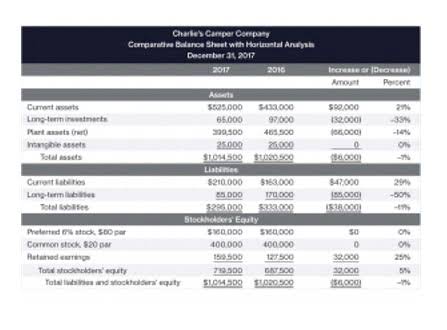Content
Conversely, a lower ratio indicates the company is not using its assets as efficiently. This might be due to excess production capacity, poor collection methods, or poor inventory management. Companies calculate this ratio on an annual basis, and higher asset turnover ratios are preferred by investors and creditors compared to lower ones. Your company’s asset turnover ratio helps you understand how productive your small business has been.
- This is worked out by multiplying asset turnover by profit margin and financial leverage.
- The asset turnover ratio can also be analyzed by tracking the ratio for a single company over time.
- To that end, it’s a good idea to compare your asset turnover ratio with averages for your industry to get the most accurate picture of your business’s performance.
- This can include outsourcing the delinquent accounts to a collection agency, hiring an employee just for collecting pending invoices, and reducing the amount of time given to customers to pay.
- Asset turnover ratios vary throughout different sectors, so only the ratios of companies that are in the same sector should be compared.
- Peggy James is a CPA with over 9 years of experience in accounting and finance, including corporate, nonprofit, and personal finance environments.
While there is always the option of utilizing a more in-depth, weighted average calculation, this isn’t mandatory. Knowing how to calculate asset turnover and how to use it to identify companies with competitive advantages can help uncover good investment opportunities. At its core, asset turnover is a measure of how well management does at efficiently using its capital. As shown in the formula below, the ratio compares a company’s net sales to the value of its fixed assets. In simple terms, the asset turnover ratio means how much revenue you earn based on the total assets.
Should a Company’s Return on Assets Be Greater Than Its Return on Equity?
You can learn more about the standards we follow in producing accurate, unbiased content in oureditorial policy. The Structured Query Language comprises several different data types that allow it to store different types of information… Gain in-demand industry knowledge and hands-on practice that will help you stand out from the competition and become a world-class financial analyst.

The total asset turnover ratio should be interpreted in conjunction with the working capital turnover ratio. This is because the presence of current assets in the ratio can lead to misinterpretation of results. Another is if the company sells off some of its assets, thereby reducing the average assets. Finally, if the company outsources some of its assets, it will also have a higher ratio. The asset turnover ratio is expressed as a number instead of a percentage so that it can easily be used to compare companies in the same industry. So, for example, if a company had an asset turnover ratio of 3, this means that each dollar of assets generates $3 of revenue.
Characteristics of Calculating Current Assets Turnover
The asset turnover ratio is expressed as a rational number that may be a whole number or may include a decimal. By dividing the number of days in the year by the asset turnover ratio, an investor can determine how many days it takes for the company to convert all of its assets into revenue. The asset turnover ratio can be modified to analyze only the fixed assets of a company.
- Essentially, the net sales are primarily utilized for calculating the ratio returns and refunds.
- This gives investors and creditors an idea of how a company is managed and uses its assets to produce products and sales.
- In other words, every $1 in assets generates 25 cents in net sales revenue.
- We use the average total assets across the measured net sales period in order to align the timing between both metrics.
- Let’s say ABC Company operates in the retail sector, which has an average asset turnover ratio of 2.1.
- Its total assets were $3 billion at the beginning of the fiscal year and $5 billion at the end.
It’s important to have realistic expectations of your asset turnover ratio in comparison to other companies in the same industry. It means that the company has made sales worth Rs. 1,000 for every Rs. 100 invested in the current assets. A high turnover ratio does not necessarily mean high profits, and the true measure of a company’s performance is its ability to generate profit from its revenue.
Related investing topics
The various types of database software come with advantages, limitations and optimal uses that prospective buyers should be aware… The vendor continues to build out its database-as-a-service https://www.bookstime.com/ platform and is now aiming to make it easier for developers to … First, as we have been given Gross Sales, we need to calculate the Net Sales for both companies.
Why is leverage ratio important?
The leverage ratio category is important because companies rely on a mixture of equity and debt to finance their operations, and knowing the amount of debt held by a company is useful in evaluating whether it can pay off its debts as they come due.
It’s being seen that in the retail industry, this ratio is usually higher, i.e., more than 2. The efficiency ratio compares a company’s net sales with average total sales. It’s important to note that the asset turnover ratio is based on industry standards and some industries are likely to have better ratios than others. So to be able to use the asset turnover ratio effectively it needs to be compared to other companies in the same industry.
Asset Turnover Template
On the other side, selling assets to prepare for declining growth will result in an artificial inflation of the ratio. Artificial Asset Turnover Ratio deflation can be caused by a company buying large amounts of assets, such as new technologies, in anticipation of growth.
A low fixed asset turnover ratio could also mean that the company’s assets are new . You can calculate Brandon’s Bread Company’s total assets turnover ratio by dividing its net sales by average total sales.





Leave a Reply